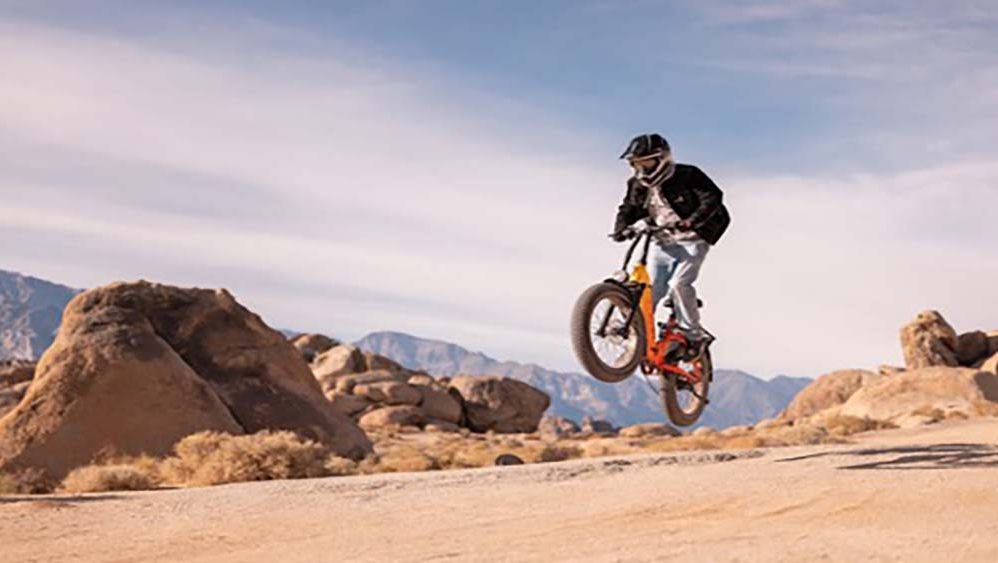Mountain biking is an exciting sport that merges the physical challenge of cycling with the joy of outdoor exploration. In recent years, electric bikes, or e-bikes, have significantly broadened the accessibility of mountain biking, making it an inviting option for beginners and experienced riders alike. E-bikes assist with uphill climbs and long distances, allowing riders to save their energy and enjoy the ride even on challenging terrains. This guide provides a detailed introduction to mountain biking for beginners, highlighting the advantages of starting with an e-bike and providing essential tips to embark on this thrilling journey.

1. Understanding Mountain Biking
Mountain biking encompasses various styles, each offering unique challenges and experiences. The most common include cross-country (XC), which involves riding on a mixture of flat and hilly terrains; trail riding, which features moderate climbs and descents on single-track trails; downhill (DH), which is performed on steep, rough terrains and requires a high level of technical skills; and all-mountain (AM), which combines elements of XC and DH, offering a balanced experience of climbing and descending. For beginners, starting with less technical cross-country or trail riding can be less intimidating and provide a solid foundation in basic mountain biking skills.
2. Invest in an E-bike
Choosing the right electric mountain bike can make a significant difference in your mountain biking experience. E-MTBs come in different configurations tailored to various mountain biking disciplines. Typically, these bikes are equipped with either 29-inch wheels that provide greater stability or 27.5-inch wheels that offer increased maneuverability. Some bikes feature a combination of both, known as “mullet builds,” where the front wheel is 29 inches and the rear wheel is 27.5 inches. This setup allows for robust stability upfront with enhanced agility at the back.
E-bikes also differ in suspension types: the full-suspension models are prevalent due to their comfort and performance on rough terrains, but there are also trail-focused electric hardtail options, which may be more affordable and still available for less rugged rides.
In most E-MTBs, battery capacity varies from 250Wh to 700Wh; larger batteries offer longer range but are heavier, so consider your typical ride length and terrain type when choosing.

3. Gear Up with the Right Equipment
Having the right gear is crucial for safety and comfort in mountain biking. Start with a well-fitted helmet, which is mandatory for protecting against head injuries. Gloves protect your hands during falls and improve grip on the handlebars. Mountain bike-specific shoes can enhance pedal efficiency and comfort. Additionally, wear appropriate eyewear to shield your eyes from mud, bugs, and branches. Investing in a hydration pack is also advisable, as mountain biking can be physically demanding and staying hydrated is essential. Lastly, consider padded shorts for extra comfort on long rides.
4. Master Basic Techniques
Mountain biking requires mastering several key techniques to navigate trails safely and efficiently. Beginners should focus on learning how to position their body during climbs and descents, how to brake effectively without skidding, and how to shift gears appropriately to manage different terrains. Practice these skills in a safe, controlled environment before hitting challenging trails. As you gain confidence, gradually increase the difficulty of the terrains you tackle to better develop your riding techniques.

5. Navigating and Trail Reading
Navigating trails skillfully is crucial for safe and enjoyable mountain biking. Learn to read the trail ahead of you, recognizing features such as rocks, roots, and changes in terrain. Look ahead rather than directly at your front wheel; this helps you anticipate obstacles and decide the best line to take. Understanding trail signage is also essential, as it provides information about trail difficulty and directions. For beginners, it’s advisable to start on less technical trails and gradually progress to more challenging ones as your confidence and skills improve. Use apps or GPS devices designed for outdoor activities to help with navigation and to keep track of your routes.
6. Maintenance Essentials
Regular maintenance of your e-MTB is key to ensuring its longevity and reliability. Basic maintenance tasks include cleaning your bike after muddy rides, checking tire pressure, and lubricating the chain regularly. Also, inspect your brake pads for wear and ensure your brakes are always in top working order. Learn how to adjust your bike’s gears and check for any loose components before and after rides. Familiarize yourself with how your e-bike’s motor and battery function and follow the manufacturer’s instructions for care and charging. This routine care will help prevent breakdowns and costly repairs, ensuring a smoother ride each time.

7. Joining a Biking Community
Being part of a biking community can greatly enhance your mountain biking experience. Join local clubs or online forums where you can connect with more experienced riders, get advice, and share experiences. Community members can provide valuable insights on the best local trails, upcoming events, and the latest biking gear and technology. Participating in group rides can also improve your riding skills and offer a safer environment for trying new trails. Additionally, biking communities often engage in trail maintenance and advocacy efforts, providing a chance to give back to the trails you enjoy.
8. Planning Your First Trail Ride
Before embarking on your first trail ride, plan carefully to ensure a positive experience. Choose a trail suitable for your skill level—look for green or blue trails that offer manageable challenges. Check the weather forecast and avoid riding in extreme conditions that could make the trail dangerous or overly difficult. Prepare a backpack with essentials like water, snacks, a basic tool kit, a first-aid kit, and an extra layer of clothing. Inform someone of your route and expected return time, especially if you are riding alone. This preparation will help you feel more confident and enjoy your adventure without unnecessary interruptions.

9. Advancing Your Skills
As you become more comfortable with basic riding techniques, consider taking your skills to the next level. Attend workshops or classes that focus on advanced riding techniques such as jumping, high-speed cornering, and technical descents. Practicing these skills in a controlled environment can dramatically improve your confidence and capability on the trail. Another way to advance is by gradually increasing the difficulty of the trails you ride, pushing your limits in a safe and structured manner. Also, consider participating in local races or challenges, which can motivate you to improve and allow you to measure your progress against other riders.
Conclusion
Mountain biking is a rewarding sport that offers endless opportunities for adventure and personal growth. By starting with the right e-bike, equipping yourself with essential gear, and learning fundamental biking skills, you can enjoy the thrills and health benefits of mountain biking safely and sustainably. Remember to respect trail etiquette, maintain your bike regularly, and be a part of the mountain biking community to enhance your experience. Whether you’re exploring local trails or tackling rugged terrains, mountain biking can be a source of great joy and satisfaction. Embrace the journey, keep pushing your limits, and most importantly, enjoy every ride. Happy mountain biking!














































